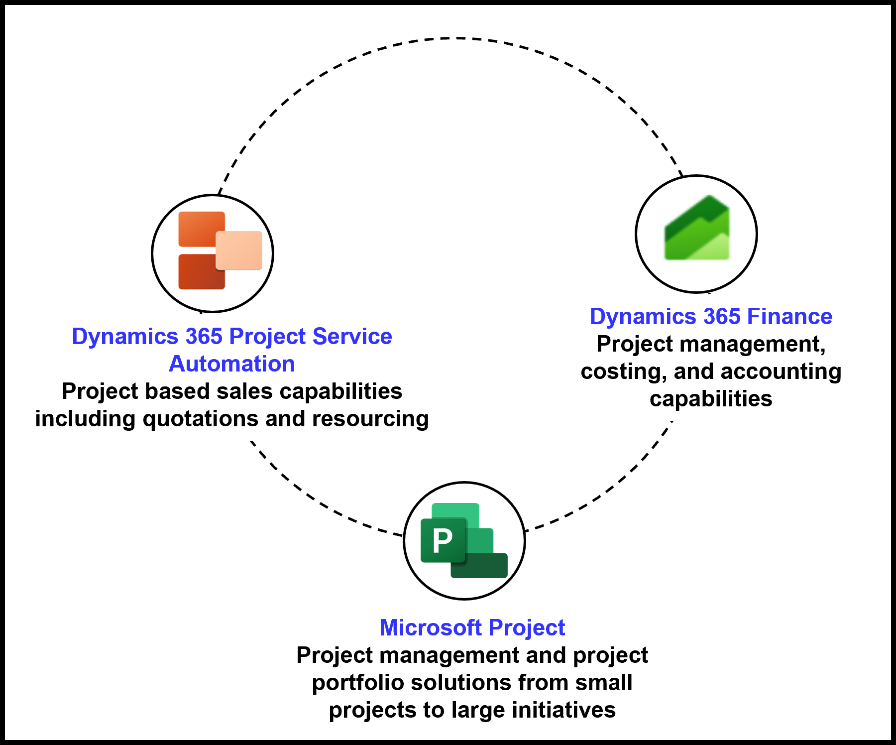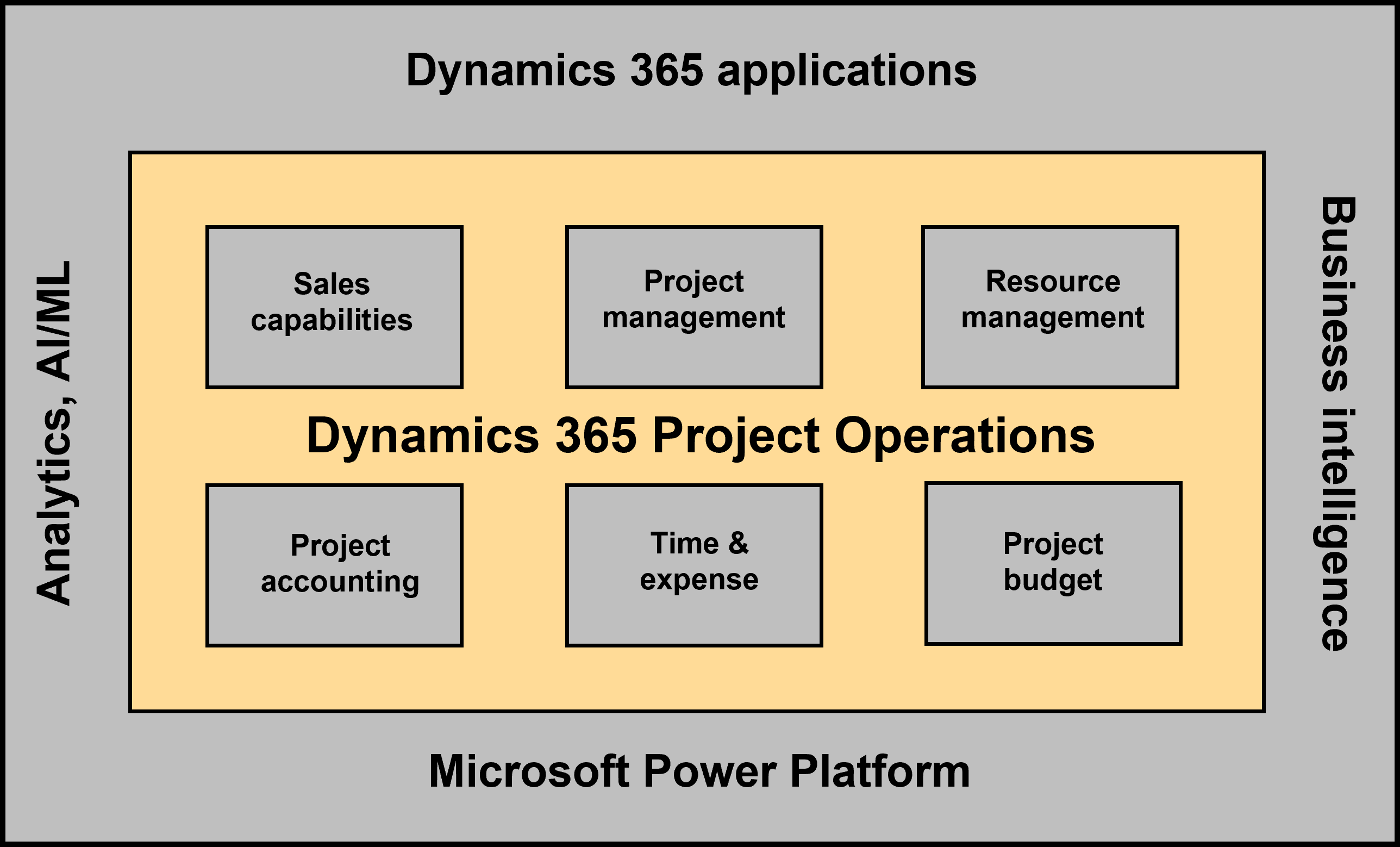Describe Dynamics 365 Project Operations capabilities
Project Operations is designed to manage your professional service business, end to end. Using this application, you can digitize your projects from the quoting stage to financials.
Project Operations is built upon three already established products coming together as one solution. Together they help you manage the financial aspects of your project-based business, from deal management and pricing to invoicing and revenue recognition. This combination is detailed in the following diagram.

Use cases
The Project Operations application provides a wide range of functionalities suitable for various job roles, such as the following:
Resource Manager
Sales manager
Accounts manager
Project manager
The three products on which Project Operations are built are well established in specific areas. For example, using Microsoft Project, a Resource Manager can plan and schedule resources, which Project Service Automation doesn't provide. With Project Service Automation, a sales manager can set up the advanced sales and delivery functionality. However, Project Service Operations doesn't provide any visibility into the financial results of the execution of a project. Dynamics 365 Finance enables account managers to execute project accounting along with time and expense management features. Project Operations provides a comprehensive business and project management solution, connecting the three products by using a seamless integration technique that enables the roles mentioned to execute individual jobs in a single product. It provides end-to-end project visibility to project managers.
Capabilities
Project Operations is built on the Dynamics 365 applications platform and Microsoft Power Platform. Project Operations offers the business intelligence capabilities of Microsoft Azure powered by machine learning (ML) and artificial intelligence (AI). The following diagram depicts the capabilities of Project Operations.

Deployments
Project Operations offers the following three deployment options to meet customers’ requirements.
Lite deployment
The lite deployment includes the following capabilities:
Sales process for projects that extends Dynamics 365 Sales application experiences
Project planning using Microsoft Project for the Web
Multi-dimensional pricing
Unified resource management
Time tracking
Basic expense
Proforma invoicing for Project manager's review and edits
Project Operations for resource/non-stocked scenario
The Project Operations for resource/non-stocked scenarios includes the following capabilities:
Sales process for projects that extends the Sales application
Project planning using Microsoft Project for the Web
Multi-dimensional pricing
Unified resource management
Time tracking
Basic expense
Full expense
Receipt OCR
Proforma and customer-facing invoicing
Revenue recognition for projects
Project Operations for stocked/production order scenario
The Project Operations for stocked/production order scenarios includes the following capabilities:
Project planning using WBS
Resource management
Time tracking
Full expense
Receipt OCR
Full invoicing
Revenue recognition
Production orders
Stocked materials support with inventory
Next, we explore the Project Operations life cycle and the project types for different deployment types.